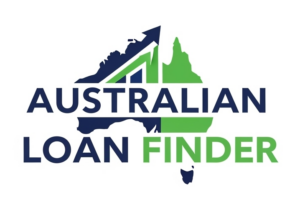Disclosure: This post contains sponsored links whereby we may receive a commission for any purchases made. The following is general information only and should not be considered financial advice.
Running a business in Australia comes with its share of financial demands, whether it’s securing a prime commercial property, investing in new equipment, or managing day-to-day cash flow. That’s where commercial loans come in. Unlike traditional home loans, commercial loans are designed specifically for business purposes, offering tailored solutions that align with the unique needs and growth trajectories of Australian enterprises.
But navigating the world of commercial finance can feel overwhelming. With multiple loan types, varying eligibility criteria, and a range of lenders, from the Big Four banks to nimble non-bank financiers, it’s crucial to understand what’s on offer and how to position your business for approval. Whether you’re a seasoned entrepreneur or launching your first venture, this comprehensive guide breaks down everything you need to know about commercial loans in Australia, from the basics to the application process, helping you make informed decisions that fuel your business ambitions.
Top Commercial Loan Providers For November 2025
1) Australian Loan Finder

Australian Loan Finder is an Australian-owned business finance provider helping local small businesses access fast, flexible, and transparent funding through partnerships with reputable Australian lenders. Unlike traditional banks or generic loan marketplaces, Australian Loan Finder offers a direct, streamlined approach to business finance—acting as your dedicated finance partner from application to funding. Businesses can apply online in just 2 minutes, with loans available from $5,000 to $500,000, and receive personalised funding options designed around their needs. For eligible borrowers, no upfront security is required on loans under $150,000, and decisions can be made within hours—with funds often available in as little as 24 to 72 hours.
With fixed, transparent pricing, loan terms between 3 months and 5 years, and flexible repayment schedules that align with your cash flow, Australian Loan Finder gives business owners the clarity and control they need to grow confidently. Whether you’re managing day-to-day operations or investing in expansion, Australian Loan Finder simplifies access to funding—so you can focus on what matters most: running your business.
2) Lumi

Introduction to Lumi
Lumi stands at the forefront of small business financing solutions in Australia, offering a robust platform that prioritizes flexibility and transparency.
With a commitment to empowering businesses, Lumi provides unsecured loans ranging from anywhere from $5,000 to $300,000, helping to simplify the lending process for entrepreneurs.
Lumi Business Loan Application Process
- Quick:Simple online application process to submit your information and the type of loan your after to get started
- Simple: Simply gather your ABN/ACN, driver’s license, and bank details and find out pretty quick if your approved
- Fast: Approval can come as fast as 2 hours, and funding can hit your account within the same business day
Features of Lumi Business Loans
- Loan Amount Flexibility: Borrowers can access loans ranging from $5,000 to $300,000, accommodating diverse business needs
- Speedy Application and Approval: Lumi’s emphasis on quick processing allows applicants to receive funds within the same business day, facilitating timely responses to business opportunities
- Transparent Fee Structure: Lumi sets itself apart with minimal fees, notably a 2.5% establishment fee, providing clarity and predictability for borrowers
- Unsecured Loans: With a focus on inclusivity, Lumi offers unsecured business loans, eliminating the need for collateral for amounts up to $300,000
- Flexible Repayment Options: Weekly repayment frequencies, principal and interest repayment types, and the option for extra repayments contribute to a borrower-friendly repayment structure
- Early Repayment Benefits: Lumi distinguishes itself by allowing borrowers to pay off their loans early without incurring penalties. Early payout options and discounts are available, with principal-only payouts accessible after 6 months
- Eligibility Criteria: Lumi caters to businesses that are at least six months old, with a minimum annual turnover of $50,000, establishing accessibility for a broad range of enterprises
3) Prospa

Overview of Prospa
Navigating the landscape of small business loans in Australia? Prospa is another solid contender in the market across both Australia and New Zealand. Prospa provides small business owners with a quick and simple way to obtain financing, and it has already assisted thousands of Australian small enterprises. Prospa received the Deloitte Tech Fast 50 in 2015, after increasing by 6071% in three years, making it Australia’s fastest growing technology firm and Asia’s third quickest. Prospa was a Telstra Business Awards finalist in 2015 and ranked 33rd globally as a leading innovator in KPMG’s Fintech 100.
How Prospa Small Business Loans Work
Prospa offers loans from $5,000 up to $500,000 for cash flow or growth. You can apply online in about 10 minutes and often get a decision the same day (with funds possible in 24 hours).
No upfront security is needed for loans under $150,000. Loan interest rates vary based on your business and are calculated upfront. This helps you to know the total cost before you borrow. Early repayment options are available to save on interest.
Benefits of Prospa Business Loan
Choosing Prospa for your business financing needs means opting for a partner who understands the nuances of small Australian businesses.
Simple Application Steps: Prospa ensures a straightforward application process that respects your time and urgency. With an online form that takes around 10 minutes, you’re on your way to financial support without unnecessary delays.
Flexible Loan Uses: Prospa allows you to utilize the loan for various business objectives, from buying supplies to expanding your team or renovating your workspace. Your business, your choices.
Variable Loan Durations: With loan periods ranging from 3 months to 3 years, Prospa caters to different business needs. Whether you want a short-term loan (boost) or a more extended financial support plan, Prospa offers flexibility.
Modular Payment Schedules: Prospa understands that one repayment schedule doesn’t fit all. You have the freedom to schedule repayments based on your business’s cash flow, choosing between weekly and daily payments.
Quick Approval and Funding: Prospa lives up to its promise of being swift. A 10-minute online application, coupled with approval possible within the hour depending on your scenario ensures you don’t miss out on capital.
Prospa’s business loans offer numerous advantages:
- Streamlined application: The online form takes only 10 minutes to complete, respecting your time and urgency.
- Versatile loan purposes: Use funds for various business objectives, including purchasing supplies, expanding your team, or renovating your workspace.
- Flexible loan terms: Choose from loan periods ranging from 3 months to 3 years, tailored to your specific business needs.
- Customisable repayment options: Schedule repayments based on your business’s cash flow, with weekly and daily payment options available.
- Rapid approval process: Depending on your situation, approval is possible within an hour of application submission.
1. Understanding Commercial Loans in Australia

What Qualifies as a Commercial Loan
A commercial loan is a form of business finance used to fund activities that drive business growth and operations. In Australia, these loans are typically used for purchasing commercial property, acquiring equipment, refinancing existing debt, or injecting capital into business expansion projects. Unlike personal or residential loans, commercial loans are assessed based on the business’s ability to generate income and repay the debt, rather than solely on the borrower’s personal financial situation.
Commercial loans are usually secured by business assets, such as property, equipment, or inventory, though unsecured options exist for businesses with strong credit profiles. The flexibility and structure of these loans make them ideal for established companies and start-ups alike, provided they can demonstrate sound financial health and a clear repayment strategy.
How Commercial Loans Differ from Residential Loans
While both commercial and residential loans involve borrowing money, the similarities pretty much end there. Business loans require a fundamentally different assessment approach. Lenders scrutinize cash flow statements, profit and loss records, and balance sheets to gauge a business’s serviceability, essentially, can the business generate enough revenue to cover loan repayments?
Residential loans, on the other hand, focus heavily on the borrower’s personal income, employment stability, and credit history. Documentation for commercial loans is more extensive, often including detailed business plans, financial forecasts, and asset valuations. Also, commercial loans typically come with higher interest rates to reflect the increased risk lenders assume when financing business ventures.
Another key difference is flexibility. Commercial loans often offer customizable repayment schedules, monthly, quarterly, or even annually, and may include interest-only periods, which can be advantageous for managing cash flow during expansion phases. Residential loans are generally more standardized, with fixed monthly repayments over a set term.
2. Types of Commercial Loans Available

Commercial Property Loans
Commercial property loans are among the most common forms of business finance in Australia. They’re used to purchase, refinance, or develop real estate for business use, think office buildings, retail spaces, warehouses, or industrial sites. These loans are typically secured against the property itself, which provides lenders with a tangible asset to recover should the borrower default.
Loan amounts and terms vary widely depending on the property value, the business’s financial position, and the lender’s criteria. Terms can stretch from 5 to 30 years, and repayment structures may include principal and interest or interest-only options. Many property investors opt for interest-only repayments to maximize cash flow during the loan term, then refinance or sell the property down the track.
Equipment Finance
For businesses that rely on machinery, vehicles, or technology to operate, equipment finance offers a practical solution. This type of loan is specifically designed to fund the purchase of business assets and is usually secured against the equipment itself. That means if your business needs a new delivery van, printing press, or IT infrastructure, you can finance it without tying up working capital.
Equipment finance often comes with flexible terms ranging from 1 to 7 years, depending on the asset’s expected lifespan. One major advantage? The depreciation and interest may be tax-deductible, which can ease the overall cost burden. Lenders may offer hire purchase agreements, chattel mortgages, or lease arrangements, each with distinct tax and ownership implications, so it’s worth consulting with an accountant before committing.
Business Overdrafts and Lines of Credit
When cash flow is unpredictable, as it often is in business, having access to a business overdraft or line of credit can be a lifesaver. These flexible finance options allow businesses to withdraw funds up to an approved limit, paying interest only on the amount used. It’s perfect for covering short-term expenses like payroll, inventory purchases, or bridging gaps between invoicing and payment.
Unlike term loans, overdrafts and lines of credit are revolving, meaning you can repeatedly draw down and repay as needed, provided you stay within your limit. Interest rates are typically variable, and while they may be higher than traditional loans, the flexibility and accessibility make them invaluable for managing day-to-day operations.
3. Eligibility Requirements for Commercial Loans
Business Financial Health Criteria
Lenders want to see that your business is viable and capable of repaying the loan. That means demonstrating solid financial health through consistent revenue, healthy profit margins, and positive cash flow. Established businesses will need to provide at least two years of financial records, including profit and loss statements, balance sheets, and cash flow forecasts.
For start-ups or newer businesses, lenders dig deeper into the business plan and financial projections. They’re looking for realistic revenue forecasts, a clear market strategy, and evidence of industry experience. Personal credit history also plays a role, especially for sole traders and small business owners, since lenders may view the business and owner as closely intertwined. A strong credit score can tip the scales in your favor, while defaults or poor credit may require alternative lenders or higher interest rates.
Serviceability is another critical factor. Lenders calculate your debt service coverage ratio (DSCR) to ensure your business income exceeds loan repayments by a comfortable margin. Generally, a DSCR of 1.2 or higher is preferred, meaning your income should be at least 20% more than your debt obligations.
Documentation Needed
Prepare to gather a substantial paper trail when applying for a commercial loan. Standard documentation includes:
- Business financials: Profit and loss statements, balance sheets, and cash flow statements for the past 1–3 years.
- Tax returns: Both business and personal tax returns, typically for the last two years.
- Business plan: Especially for start-ups, a detailed plan outlining your business model, market analysis, and growth strategy.
- Identification: Driver’s license, passport, and proof of address for all directors or guarantors.
- Asset valuations: If using property or equipment as security, a recent valuation may be required.
- Details of existing liabilities: Loan agreements, lease contracts, and credit card statements.
Working with a mortgage broker or financial advisor can streamline this process, as they’ll know exactly what each lender requires and can help you present your application in the strongest light.
4. Interest Rates and Loan Terms
Fixed vs. Variable Rates
One of the first decisions you’ll face when securing a commercial loan is whether to lock in a fixed interest rate or go with a variable rate. Fixed rates offer stability, your repayments remain constant over the fixed period (usually 1 to 5 years), which makes budgeting easier and shields you from market fluctuations. This can be particularly valuable in a rising rate environment.
Variable rates, but, offer flexibility. They move with the market, meaning your repayments can decrease if rates drop, but they can also climb if rates rise. Variable loans often come with features like redraw facilities and offset accounts, which can be handy for managing cash flow and reducing interest costs over time.
Some lenders offer split loans, allowing you to divide your loan between fixed and variable portions. This hybrid approach gives you a bit of both worlds, stability and flexibility, while hedging against rate volatility.
Typical Loan Terms and Repayment Schedules
Commercial loan terms in Australia range from as short as 1 year to as long as 30 years, depending on the loan type and purpose. Property loans generally have longer terms, while equipment finance and working capital loans tend to be shorter.
Repayment schedules are more flexible than residential loans. You might repay monthly, quarterly, or even annually, depending on your business’s cash flow cycle. For seasonal businesses, like tourism operators or agricultural enterprises, annual or balloon repayments can align better with income patterns.
Interest-only repayments are another common feature, particularly for commercial property loans. With interest-only, you pay only the interest portion for a set period (typically 1 to 5 years), keeping repayments lower and freeing up capital for other investments. At the end of the interest-only period, you’ll switch to principal and interest repayments, or refinance if your strategy shifts.
5. Top Lenders for Commercial Loans in Australia
Major Banks
The Big Four, Commonwealth Bank, Westpac, NAB, and ANZ, dominate the commercial lending landscape in Australia. They offer comprehensive product suites, competitive rates for strong borrowers, and the security of dealing with household names. These banks have dedicated business banking divisions with specialists who understand the nuances of commercial finance.
Major banks typically favor established businesses with solid financials and good credit. They offer a range of products, from property loans and equipment finance to business overdrafts and trade finance. If your business ticks all the boxes, strong cash flow, healthy equity, and a clean credit history, the major banks can provide attractive terms and the convenience of consolidated banking services.
That said, their lending criteria can be strict, and approval processes may be slower compared to smaller lenders. Start-ups or businesses with non-standard income sources might find it harder to gain traction with the majors.
Non-Bank Lenders and Alternative Financiers
Non-bank lenders also referred to as “neobanks“ like Pepper Money, Maxiron Capital, and others have carved out a niche by offering more flexible criteria and faster approval times. They’re often willing to work with businesses that don’t fit the traditional mold, think self-employed individuals, businesses with limited trading history, or those with past credit issues.
These lenders may charge slightly higher interest rates to offset the additional risk, but their flexibility can be invaluable. They’re also more likely to consider alternative documentation, such as accountant-prepared financials or bank statements, rather than strictly relying on tax returns.
Another emerging option is peer-to-peer lending platforms and fintech lenders, which use technology to assess risk and approve loans quickly. While newer to the scene, they’re gaining traction among tech-savvy business owners looking for speed and convenience.
6. Benefits of Commercial Loans for Business Growth
Expanding Business Operations
Commercial loans unlock opportunities that might otherwise be out of reach. Whether it’s opening a new location, entering a fresh market, or scaling up production, access to capital is often the catalyst that turns ambition into reality. Instead of slowly saving profits over years, a well-structured loan lets you seize growth opportunities when they arise.
For example, a retail business might use a commercial property loan to purchase its premises, eliminating rent and building equity over time. A manufacturing company could finance new machinery through equipment finance, boosting productivity and capacity without draining cash reserves. In both cases, the loan becomes a strategic tool that accelerates growth and strengthens the business’s competitive position.
Tax Advantages and Deductions
One of the often-overlooked benefits of commercial loans is the potential for tax deductions. In Australia, interest paid on business loans is generally tax-deductible, which can significantly reduce the effective cost of borrowing. If you’re using equipment finance, you may also be able to claim depreciation on the assets, further lowering your taxable income.
These tax benefits can make a meaningful difference to your bottom line, especially for businesses in higher tax brackets. It’s always wise to consult with an accountant or tax advisor to ensure you’re maximizing deductions and structuring your loan in the most tax-efficient way.
7. Common Challenges and How to Overcome Them
Navigating Strict Lending Criteria
Let’s be honest, getting approved for a commercial loan can be tough. Lenders have stringent criteria, and even minor blemishes on your credit report or inconsistencies in your financials can derail an application. Start-ups face an even steeper uphill battle, as lenders prefer businesses with proven track records.
So, how do you overcome this? Preparation is key. Before approaching lenders, get your financial house in order. Clean up your credit report, reconcile discrepancies in your accounts, and ensure your financial statements are accurate and up-to-date. If your business is new, invest time in crafting a compelling business plan with realistic forecasts and clear market research.
Working with a mortgage broker who specializes in commercial finance can also be a game-changer. Brokers have access to multiple lenders, including non-bank and alternative financiers, and can match your business profile with the lender most likely to approve your application. They’ll also help you present your case in the best possible light, increasing your chances of success.
Managing Cash Flow During Repayment
Once you’ve secured a loan, the next challenge is managing repayments without straining your cash flow. This is where loan features like redraw facilities, offset accounts, and flexible repayment schedules come into play. A redraw facility lets you access extra repayments you’ve made, acting as a financial buffer during lean periods. An offset account links your loan to a transaction account, reducing the interest you pay based on your account balance.
It’s also worth considering interest-only repayments during the early stages of a loan, especially if you’re using the funds for expansion or capital investment that will take time to generate returns. This keeps repayments manageable while your business ramps up revenue.
Eventually, disciplined financial management and regular cash flow forecasting are your best defenses. Monitor your income and expenses closely, and don’t hesitate to communicate with your lender if you anticipate difficulties, many are willing to negotiate revised terms rather than risk a default.
8. Steps to Apply for a Commercial Loan
Preparing Your Business Plan and Financials
Before you even think about filling out an application, you need to have your ducks in a row. That means a comprehensive business plan and accurate, up-to-date financial records. Your business plan should outline your company’s objectives, market position, competitive advantages, and growth strategy. For start-ups, include detailed financial projections showing how you’ll generate revenue and repay the loan.
Your financials should be professionally prepared, ideally by an accountant, and include profit and loss statements, balance sheets, cash flow forecasts, and tax returns. Lenders scrutinize these documents to assess risk, so accuracy and transparency are critical. Any inconsistencies or red flags can delay approval or result in a rejection.
If your business has fluctuating income or is in a high-risk industry, consider supplementing your application with additional evidence of stability, such as long-term contracts, customer testimonials, or industry awards.
Working with Brokers vs. Direct Lenders
You have two main paths when applying for a commercial loan: going directly to a lender or working with a mortgage broker. Each approach has its pros and cons.
Applying directly to a bank or lender can save on broker fees and may be simpler if you have an existing relationship with the institution. But, it limits your options to that lender’s products, and if you’re rejected, you’ll need to start the process over elsewhere, potentially impacting your credit score.
Mortgage brokers, on the other hand, act as intermediaries with access to a wide panel of lenders, including banks, non-banks, and alternative financiers. They can compare rates, terms, and features across multiple products, often securing better deals than you’d find on your own. Brokers also handle much of the paperwork and liaison with lenders, saving you time and stress. While brokers typically earn a commission from the lender, many don’t charge borrowers directly, making them a cost-effective option.
For complex or non-standard applications, like start-ups, businesses with credit issues, or those requiring large loan amounts, a broker’s expertise and network can be invaluable.
Conclusion
Securing a commercial loan in Australia is more than just a financial transaction, it’s a strategic decision that can propel your business forward, whether you’re purchasing property, investing in equipment, or managing cash flow. With a diverse range of loan types, lenders, and structures available, there’s a solution to fit virtually every business need and stage of growth.
But success hinges on preparation. Understanding the differences between commercial and residential loans, gathering thorough documentation, and presenting a strong financial case are all critical steps. Whether you choose to work with a major bank for stability or a non-bank lender for flexibility, the key is aligning the loan with your business goals and cash flow realities.
Take the time to explore your options, consult with financial professionals, and approach the application process with confidence. With the right commercial loan, your business can access the capital it needs to thrive, expand, and compete in Australia’s dynamic marketplace.
Why Trust AGR Technology?
Alessio Rigoli launched AGR Technology in 2013 with the intention of focusing on YouTube and blogging on technology issues such as Android, Cyber Security, Blockchain, and EdTech. Since then, the business has grown to cover services such as website creation, hosting, software development, and digital marketing. AGR Technology assists companies in a range of industries by providing innovative and high-quality technology solutions to help them thrive.
Note: This is not financial advice and is just designed to provide general information. While we run our own checks and assess each company included on our website, we may not have covered all options. If you decide to apply for a product, you will interact directly with the vendor, not AGR Technology. AGR Technology suggests that you read the appropriate PDS or offer documents before accepting any financial product offer to assess whether the products are suitable for you. Target Market Determinations are available on the provider’s website.
AGR Technology may receive a commission on sales generated by partner links on this page, but this has no influence on our opinions or evaluations and is completely free of charge to you. While we make every attempt to keep our content up-to-date this should not be taken as financial advice, be sure to seek professional advice if required.
Factors considered when writing this article:
We set criteria for picking loan platforms to analyse, such as reputation, services offered, user base, regulatory compliance, types of loans available and the years of operation along with browsing the respective websites to validate they have licences and compliance to operate in Australia, as well as other things like KYC protocols and contacting the companies.
Checked each platform for user-friendly design interfaces to ensure platforms are straightforward for beginners and more experienced customers to grasp. We obtained information about each company by visiting their separate websites, signing up for an account, reading user reviews, and looking for recent news or events related to the platforms.
Key Takeaways
- Commercial loans in Australia are specifically designed for business purposes, including purchasing property, acquiring equipment, and managing cash flow, assessed on the business’s income-generating ability rather than personal finances.
- There are multiple commercial loan types available—from commercial property loans and equipment finance to business overdrafts and lines of credit—each tailored to different operational needs.
- Eligibility for commercial loans requires strong financial health, typically including at least two years of financial records, a debt service coverage ratio of 1.2 or higher, and comprehensive documentation.
- Australian businesses can access commercial loans through major banks like the Big Four or flexible non-bank lenders, with interest rates available in fixed, variable, or split structures.
- Commercial loans offer significant tax advantages, as interest payments are generally tax-deductible and equipment depreciation can reduce taxable income.
- Working with a mortgage broker can streamline the application process by providing access to multiple lenders and helping present your business case effectively, especially for complex or non-standard applications.
Frequently Asked Questions
What is a commercial loan in Australia and how does it differ from a home loan?
A commercial loan is business finance used for purchasing commercial property, equipment, or funding operations. Unlike home loans, commercial loans are assessed based on the business’s ability to generate income and repay debt, rather than personal income, and typically feature more flexible repayment schedules.
What documentation do I need to apply for a commercial loan in Australia?
You’ll need 1–3 years of business financials including profit and loss statements and balance sheets, business and personal tax returns, a detailed business plan, identification documents, asset valuations, and details of existing liabilities. Strong documentation significantly improves approval chances.
Can start-ups get commercial loans in Australia?
Yes, start-ups can secure commercial loans, though it’s more challenging. Lenders focus heavily on your business plan, financial projections, industry experience, and personal credit history. Non-bank lenders and alternative financiers often provide more flexible criteria for newer businesses than major banks.
What is a debt service coverage ratio and why does it matter?
The debt service coverage ratio (DSCR) measures whether your business income sufficiently exceeds loan repayments. Lenders typically prefer a DSCR of 1.2 or higher, meaning your income should be at least 20% more than debt obligations to demonstrate strong repayment capacity.
Should I choose a fixed or variable interest rate for my commercial loan?
Fixed rates offer repayment stability and protection from rate increases, ideal for budgeting. Variable rates provide flexibility and potential savings if rates drop, plus features like redraw facilities. Some borrowers choose split loans to balance stability and flexibility across market conditions.
Are commercial loan interest payments tax-deductible in Australia?
Yes, interest paid on commercial loans used for business purposes is generally tax-deductible in Australia. Equipment finance may also allow depreciation deductions on assets, significantly reducing your effective borrowing cost. Always consult an accountant to maximize available tax benefits.

Alessio Rigoli is the founder of AGR Technology and got his start working in the IT space originally in Education and then in the private sector helping businesses in various industries. Alessio maintains the blog and is interested in a number of different topics emerging and current such as Digital marketing, Software development, Cryptocurrency/Blockchain, Cyber security, Linux and more.
Alessio Rigoli, AGR Technology
![logo-new-23[1] logo-new-23[1]](https://agrtech.com.au/wp-content/uploads/elementor/thumbs/logo-new-231-qad2sqbr9f0wlvza81xod18hkirbk9apc0elfhpco4.png)

